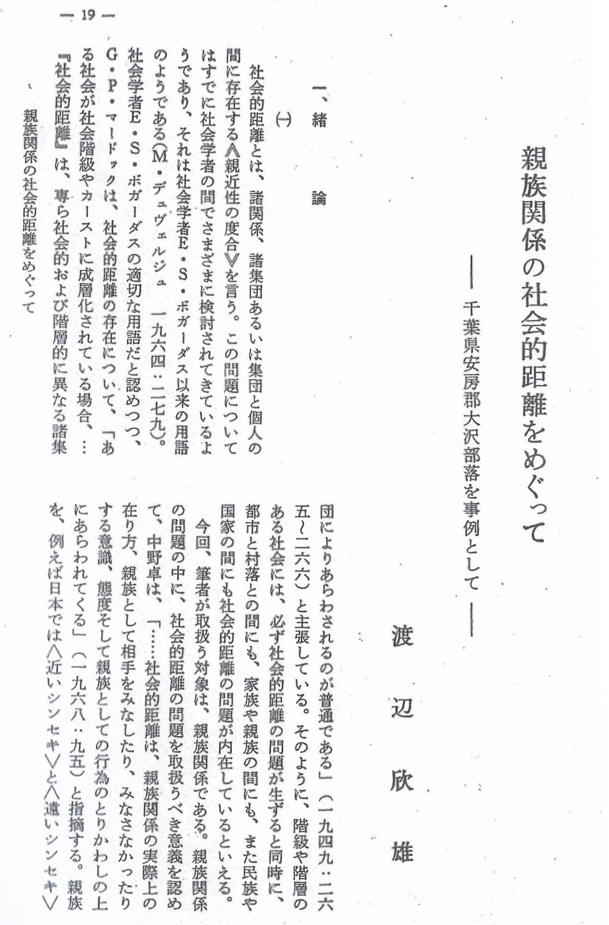ズナニエッキ/マリノフスキー/コンラッド
Florian Witold Znaniecki, Bronislaw Kasper Malinowski, and Joseph
Conrad

ズナニエッキ/マリノフスキー/コンラッド
Florian Witold Znaniecki, Bronislaw Kasper Malinowski, and Joseph
Conrad

1857 Joseph Conrad(-1924)生まれる。
1858 Frans Boas(-1942)生まれる。
1864 Robert Ezla Park生まれる。
1871 E.B.タイラー『原始文化』誠信書房
1877 L.H.モルガン『古代社会』岩波文庫
1882 Florian Witold Znaniecki(-1958)生まれる。
1884 Bronislaw Kasper Malinowski(-1942)生まれる。
1886 Ernest Watson Burgess(-1966)生まれる。
1888 ボアズ、合衆国で就職
1888 American Anthropologist 創刊
1888 ボアズ、アメリカ民俗学会創設
1890-1936J.G.フレーザー『金枝編』
1893 E.デュルケム『社会学的方法の規準』岩 波文庫
1893 シカゴ大学創設
1896 ボアズ、自然史博物館に属しながら、コロ ンビア大学で教鞭。
1897 Tha Nigger of the Narcissus (J.Conrad)
1900 Load Jim(J.Conrad)
1900 ボアズ、アメリカ民族学会を復興
1904 Nostromo (J.Conrad)
1905 ボアズ、コロンビア大学に正式に就職(- 1937年)
1909 A.ファン・ヘネップ『通過儀礼』思索 社・弘文堂
1910 L.レヴィ=ブリュル『未開社会の思惟』 岩波文庫
1911 F.ボアズ『未開人の心』(出版 1913)
1912 E.デュルケム『宗教生活の原初形態』岩 波文庫
1913 R・パーク、シカゴ大学のスタッフになる
1918-20 『ヨーロッパとアメリカにおける ポーランド農民』
1920 R.ローウィー『未開社会』(邦訳「原始 社会」)未来社
1922 B.K.マリノフスキー『西太平洋の遠洋 航海者』中央公論社[抄訳]
1922 A.R.ラドクリフ=ブラウン『アンダマ ン島の人びと』
1923 N.ミクルホ=マクライ『ニューギニア紀 行』平凡社[抄訳]
1924 W.シュミット,W.コッパーズ『民衆と 文化』
1924 ロバート・パーク「社会的距離 (Social distance)」を説明する
"Social distance describes the distance between different groups in society, such as social class, race/ethnicity, gender or sexuality. Different groups mix less than members of the same group. It is the measure of nearness or intimacy that an individual or group feels towards another individual or group in a social network or the level of trust one group has for another and the extent of perceived likeness of beliefs.[1][2]/ Robert E. Park defined social distance as "an attempt to reduce to something like measurable terms the grade and degrees of understanding and intimacy which characterizes personal and social relations generally".[3][4]/ In the sociology, social distance includes:[5]
I. Affective social distance: One widespread view of social distance is affectivity. Social distance is associated with affective distance, i.e. how much sympathy the members of a group feel for another group. Emory Bogardus, the creator of "Bogardus social distance scale" was typically basing his scale on this subjective-affective conception of social distance: "[i]n social distance studies the center of attention is on the feeling reactions of persons toward other persons and toward groups of people."[6]
II. Normative social distance: A second approach views social distance as a normative category. Normative social distance refers to the widely accepted and often consciously expressed norms about who should be considered as an "insider" and who an "outsider/foreigner". Such norms, in other words, specify the distinctions between "us" and "them". Therefore, normative social distance differs from affective social distance, because it conceives social distance is conceived as a non-subjective, structural aspect of social relations. Examples of this conception can be found in some of the works of sociologists such as Georg Simmel, Emile Durkheim and to some extent Robert Park.
III. Interactive social distance: Focuses on the frequency and intensity of interactions between two groups, claiming that the more the members of two groups interact, the closer they are socially. This conception is similar to the approaches in sociological network theory, where the frequency of interaction between two parties is used as a measure of the "strength" of the social ties between them.
IV. Cultural and Habitual Distance: Focuses cultural and habitual which is proposed by Bourdieu (1990). This type of distance is influenced by the "capital" people possess." - Wikipedia, Social distance.
[1] Boguna,
Marian, Romualdo Pastor-Satorras, Albert Díaz-Guilera, and Alex Arenas
(2004). Models of social networks based on social distance attachment.
Physical Review, 70, 1-8.
[2] Helfgott, Jacqueline B. & Gunnison, Elaine (2008). The
influence of social distance on community corrections officer
perceptions of offender reentry needs. Federal Probation, 72(1), 2-12.
[3] Park, R. E. (1924)
[4] Journal of Applied Sociology, 8, 339-344.
[5] Karakayali, Nedim. 2009. "Social Distance and Affective Orientations." Sociological Forum, vol. 23, n.3, pp. 538-562.
[6] Bogardus, E. S. 1947. Measurement of Personal-Group Relations, Sociometry, 10: 4: 306–311
1925 M.モース『贈与論』弘文堂(邦訳「社会 学と人類学」)
1925 R・パーク、アメリカ社会学会会長(- 27)
1928 M.ミード『サモアの思春期』蒼樹書房
1934 R.F.ベネディクト『文化の型』社会思 想社
1934 R・パーク、シカゴ大学を退職
1936 G.ベイトソン『ナヴェン』
1937 E.E.エヴァンス=プリチャード『アザ ンデ族における妖術、託宣、呪術』
1940 フォーテス&エヴァンス=プリチャード編 『アフリカの伝統的政治体系』みすず書房
1940 E.E.エヴァンス=プリチャード『ヌ アー族』岩波書店
1942 ボアズ死去
1944 C.クラックホーン『ナヴァホ族の妖術』
1944 A.L.クローバー『文化成長の諸形相』
1944 R・パーク死去
1946 R.F.ベネディクト『菊と刀』社会思想 社
1947 W.ホワイト『ストリート・コーナー・ソ サイエティ』垣内出版
1948 M.グリオール『水の神』せりか書房
1949 M.ミード『男性と女性』東京創元社
1949 C.レヴィ=ストロース『親族の基本構 造』番町書房
1949 G.P.マードック『社会構造』新泉社
+++
社会的距離に関する日本の渡邊欣雄先生の業績

リンク
文献
その他の情報